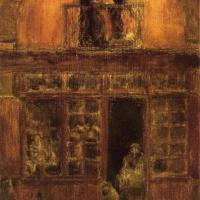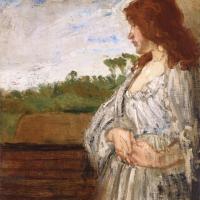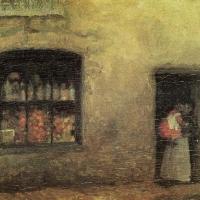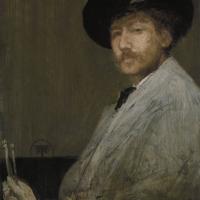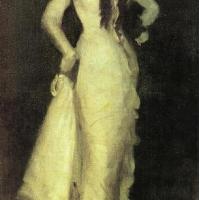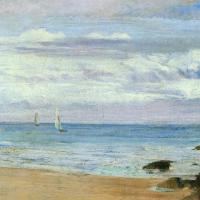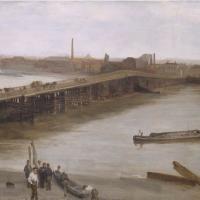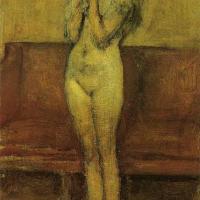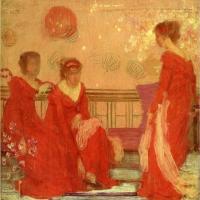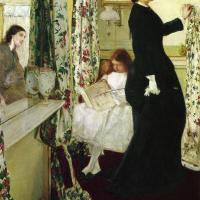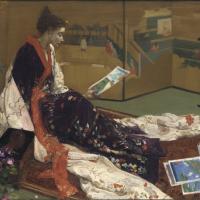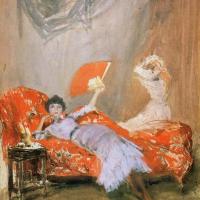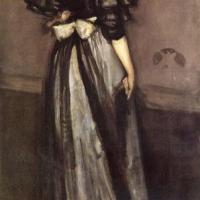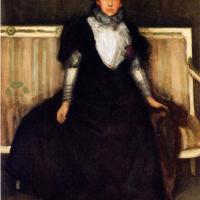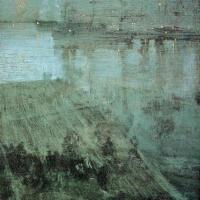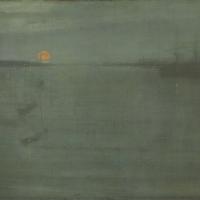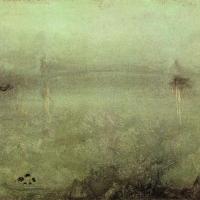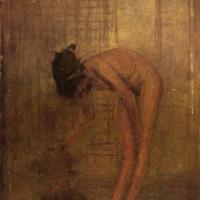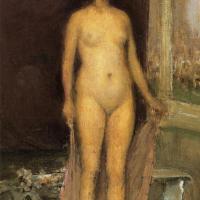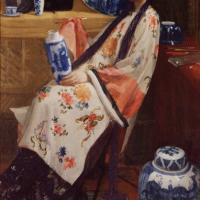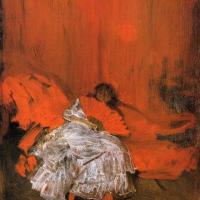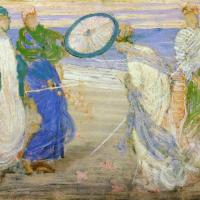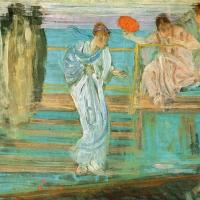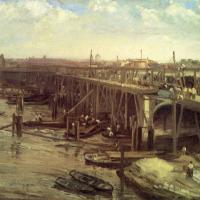James Abbott McNeill Whistler
A Shop With A Balcony
$450.00
A White Note
$450.00
Blue And Silver: Trouville
$450.00
Le Fermier Et Son Epouse
$450.00
Milly Finch
$450.00
Mrs. Walter Sickert
$450.00
Nocturne: Silver And Opal
$450.00
Nude Girl With A Bowl
$450.00
Symphony In Blue And Pink
$450.00
Symphony In White And Red
$450.00
The Last Of Old Westminster
$450.00
James Abbott McNeill Whistler
James Abbott Mc Neil Whistler (1834-1903)
James Abbott McNeill Whistler (July 11, 1834 – July 17, 1903) was an American artist, active during the American Gilded Age and based primarily in the United Kingdom. He was averse to sentimentality and moral allusion in painting, and was a leading proponent of the credo "art for art's sake". His famous signature for his paintings was in the shape of a stylized butterfly possessing a long stinger for a tail. The symbol was apt, for it combined both aspects of his personality: his art is characterized by a subtle delicacy, while his public persona was combative. He found a parallel between painting and music and entitled many of his paintings "arrangements", "harmonies", and "nocturnes", emphasizing the primacy of tonal harmony. His most famous painting is Arrangement in Grey and Black No. 1 (1871), commonly known as Whistler's Mother, the revered and often parodied portrait of motherhood. Whistler influenced the art world and the broader culture of his time with his artistic theories and his friendships with leading artists and writers.
Whistler was inspired by and incorporated many sources in his art, including the work of Rembrandt, Velázquez, Japanese art, and ancient Greek sculpture to develop his own highly influential and individual style. He was adept in many media, with over 500 paintings, as well as etchings, pastels, watercolors, drawings, and lithographs. Whistler was a leader in the Aesthetic Movement, promoting, writing, and lecturing on the "art for art's sake" philosophy. With his pupils, he advocated simple design, economy of means, the avoidance of over-labored technique, and the tonal harmony of the final result. Whistler has been the subject of many major museum exhibitions, studies, and publications. Like the Impressionists, he employed nature as an artistic resource. Whistler insisted that it was the artist's obligation to interpret what he saw, not be a slave to reality, and to "bring forth from chaos glorious harmony".
During his life, he affected two generations of artists, in Europe and in the United States. Whistler had significant contact and exchanged ideas and ideals with Realist, Impressionist, and Symbolist painters. Famous protégés for a time included Walter Sickert and writer Oscar Wilde. His Tonalism had a profound effect on many American artists, including John Singer Sargent, William Merritt Chase and Willis Seaver Adams (whom he befriended in Venice). Another significant influence was upon Arthur Frank Mathews, whom Whistler met in Paris in the late 1890s. Mathews took Whistler's Tonalism to San Francisco, spawning a broad use of that technique among turn-of-the-century California artists.
During a trip to Venice in 1880, Whistler created a series of etchings and pastels that not only reinvigorated his finances, but also re-energized the way in which artists and photographers interpreted the city—focusing on the back alleys, side canals, entrance ways, and architectural patterns—and capturing the city's unique atmospherics.
In 1940 Whistler was commemorated on a United States postage stamp when the U.S. Post Office issued a set of 35 stamps commemorating America's famous Authors, Poets, Educators, Scientists, Composers, Artists, and Inventors: the 'Famous Americans Series'.
The Gilbert and Sullivan operetta Patience pokes fun at the Aesthetic movement, and the lead character of Reginald Bunthorne is often identified as a send-up of Oscar Wilde, though Bunthorne is more likely an amalgam of several prominent artists, writers, and Aesthetic figures. Bunthorne wears a monocle and has prominent white streaks in his dark hair, as did Whistler.
The house in which Whistler was born is now preserved as the Whistler House Museum of Art. He is buried at St Nicholas Church, Chiswick.
Author Terry Mort uses the parallel to Whistler's commentary "Painting should be like breath on a glass" to that of fly fishing.
Whistler achieved worldwide recognition during his lifetime:
1884, elected an honorary member of the Royal Academy of Fine Arts in Munich
1892, made an officer of the Légion d'honneur in France
1898, became a charter member and first president, International Society of Sculptors, Painters and Gravers
A statue of James McNeill Whistler by Nicholas Dimbleby was erected in 2005 at the north end of Battersea Bridge on the River Thames in the United Kingdom.
On October 27, 2010, Swann Galleries set a record price for a Whistler print at auction, when Nocturne, an etching and drypoint printed in black on warm, cream Japan paper, 1879–80 sold for $282,000. It was likely one of the first etchings Whistler made for the Fine Art Society on his arrival in Venice in September 1879 and also one of his most celebrated views of the city.


